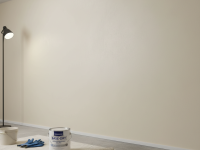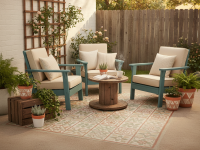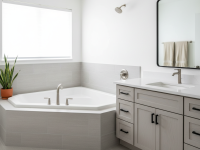body { font-family: sans-serif; line-height: 1.6; color: #333; }
h1, h2, h3 { color: #2c3e50; }
h2 { margin-top: 2em; }
h3 { margin-top: 1.5em; }
p { margin-bottom: 1em; }
ul { list-style-type: disc; margin-left: 20px; margin-bottom: 1em; }
li { margin-bottom: 0.5em; }
Hey there, fellow plant parent! Ever walk into a beautifully designed space and notice how some indoor plants just seem to radiate a magical aura? They don’t just exist; they *shine*. And no, it’s not always about having the rarest specimen or the biggest budget. More often thaot, it’s about one crucial element: lighting placement. Yes, beyond just helping your green friends survive, strategic lighting can elevate them from simple decor to breathtaking focal points.
I remember when my beloved Monstera deliciosa felt a bit… flat. It was thriving, growing new leaves like crazy, but visually, it just blended into the background. It wasn’t until I started experimenting with different light sources and angles that I truly saw its potential. Suddenly, its fenestrations cast dramatic shadows, and its glossy leaves caught the light in a whole new way. It was a game-changer! And today, I want to share my personal journey and all the tips I’ve picked up along the way so you can make your indoor jungle truly sparkle.
Why Lighting is More Than Just Growth (It’s Art!)
We all know plants need light to photosynthesize and grow. But when we talk about *highlighting* them, we’re stepping into the realm of interior design and aesthetics. Think of it like a photographer lighting a subject. The right angle and intensity can bring out textures, create depth, and even change the mood of an entire room. For our plants, this means we can emphasize their unique leaf shapes, intricate patterns, or even the graceful arch of a stem. It’s about creating drama, visual interest, and making your plants feel like living sculptures.
My journey started with simple floor lamps, but I quickly realized that different types of light fixtures offer unique possibilities. It’s not just about one-size-fits-all; it’s about understanding the tools at your disposal.
Understanding Your Lighting Toolkit: Fixture Types I Love
Before we dive into placement, let’s quickly chat about the kinds of lights that can become your best friends in this endeavor:
- Spotlights: These are fantastic for focused illumination. They come in various forms, from track lighting to small, adjustable desk lamps. Perfect for highlighting a specific plant or a feature on a plant.
- Floor Lamps with Adjustable Heads: Versatile and easy to move, many floor lamps have heads you can tilt and pivot, making them great for uplighting or downlighting taller plants.
- LED Strips: My secret weapon for shelving units or creating a subtle glow behind a collection of plants. They’re discreet and can provide a beautiful, even wash of light.
- Puck Lights/Cabinet Lights: Small, often battery-operated or plug-in, these are brilliant for illuminating plants inside display cabinets or oarrow shelves.
- String Lights (Fairy Lights): While not for intense highlighting, draped subtly around a plant or within a plant grouping, they add a magical, whimsical touch, especially in the evening.
The Art of Directional Lighting: My Favorite Techniques
This is where the magic truly happens. It’s not just about turning on a light; it’s about *where* that light comes from. I’ve found that experimenting with these techniques can completely transform how your plants look.
1. Uplighting: The Dramatic Statement
This is my absolute favorite for creating drama. Place a light source on the floor, pointing upwards at your plant. What does it do? It accentuates the underside of leaves, highlights the plant’s silhouette against the wall or ceiling, and creates captivating, elongated shadows. Think of a large Fiddle Leaf Fig or a majestic Bird of Paradise. Uplighting from below makes them look grand and almost otherworldly.
My Tip: Use a light with a narrow beam for a more intense, focused look, or a wider beam for a softer, broader wash of light. Try it in a corner to bounce light off two walls for an even grander effect.
2. Downlighting / Spotlighting: Highlighting Specific Features
This involves positioning a light source above or slightly to the side, pointing downwards. This is excellent for focusing on specific details – perhaps the intricate variegation of a Calathea or the unique texture of a cactus. It creates a pool of light around the plant, drawing the eye directly to it. I often use small spotlights mounted on shelves or track lighting for this.
My Tip: Be mindful of harsh shadows directly beneath the plant. Sometimes a slightly angled downlight works better to create softer gradients.
3. Backlighting: The Silhouetted Glow
Place your light source behind the plant, facing towards you (the viewer). This technique is incredible for creating a stuing silhouette and making your plant ‘pop’ out from its background. It can also create a beautiful “halo” effect around the edges of leaves, especially those with translucent qualities. My Monstera now gets backlighting from a hidden LED strip, and it looks like it’s glowing from within!
My Tip: This works best when the background is a solid, lighter color, or when the light source itself is concealed from direct view. It’s superb for plants positioned against a wall.
4. Side Lighting: Emphasizing Texture and Depth
As the name suggests, place your light source to the side of the plant. This is fantastic for revealing the texture of leaves, stems, and even the soil. The light and shadow play across the plant’s surface adds incredible depth and dimension that front-on lighting often misses. It’s like painting with light, making a flat object appear three-dimensional.
My Tip: Experiment with different angles from the side. A 45-degree angle often produces the most interesting highlights and shadows.
Considering the Plant’s Form & Location
Not every plant responds to every lighting technique the same way. Think about your plant’s natural structure and where it lives in your home:
- Tall, Upright Plants (e.g., Fiddle Leaf Fig, Strelitzia): Perfect candidates for dramatic uplighting or backlighting to emphasize their height and silhouette.
- Bushy, Full Plants (e.g., Boston Fern, Prayer Plant): Downlighting or side lighting can help reveal their dense foliage and intricate leaf patterns.
- Plants on Shelves or Groupings: LED strips hidden along the underside of shelves can create a lovely glow. Small puck lights can highlight individual plants within a grouping.
- Plants in Corners: A single, well-placed uplight can transform a forgotten corner into a vibrant plant display.
Color Temperature and Brightness: My Personal Take
Don’t overlook these details! They significantly impact the mood and how your plant’s colors are perceived.
- Color Temperature (Kelvin):
- Warm White (2700K-3000K): My go-to for a cozy, inviting atmosphere. It tends to make greens look richer and earthier.
- Cool White (4000K-5000K): Brighter and more modern. It can make greens appear crisper, but sometimes a bit sterile if overused. I prefer this for grow lights, but for accent lighting, I lean warm.
- Brightness (Lumens): You don’t always need super bright. Often, a softer, more subtle light works best for accentuating. Dimmers are your best friend here! They allow you to fine-tune the intensity and adapt to different times of day or moods.
My Personal Lighting Journey & Mistakes to Avoid
My first attempt at accent lighting was… enthusiastic. I shoved a bright, cool-toned desk lamp under a plant. The result? A harsh, uatural glow that looked more like an interrogation lamp than aesthetic lighting. Lesson learned! Here are a few mistakes I’ve made and how to avoid them:
- Too Bright: Overpowering light can wash out details rather than highlight them. Start subtle and gradually increase brightness.
- Wrong Angle: A poorly aimed light can create unflattering shadows or simply not achieve the desired effect. Be patient and move the light around until you find the sweet spot.
- Ignoring Heat: Some traditional bulbs (incandescent, halogen) emit a lot of heat. Position them far enough away so they don’t scorch your plant leaves. LEDs are generally much cooler and safer.
- Visible Wires: Nothing breaks the illusion faster than a tangled mess of cords. Invest in cord covers, cable ties, or strategically hide them behind furniture or plants.
- One-and-Done Mentality: Lighting is dynamic! What looks great in daylight might need adjustment at night. Consider smart plugs or timers to automate changes.
Conclusion: Let Your Indoor Jungle Shine!
Experimentation is truly the key here. There’s no single “right” way to light every plant. Each plant, each room, and each lighting fixture offers unique possibilities. Start with one plant and one light. Play with the angles, the distance, and the intensity. Observe how the shadows dance, how the leaves shimmer, and how the entire mood of your space shifts.
Remember, you’re not just illuminating a plant; you’re crafting an experience. You’re turning your indoor garden into a living art installation. So go ahead, get creative, and let your indoor plants truly unlock their ier glow. Your home (and your plants!) will thank you for it!




